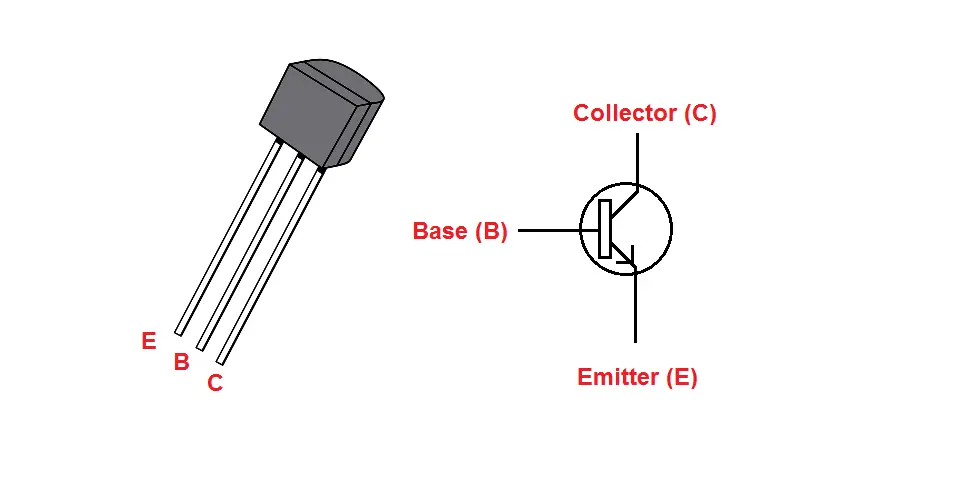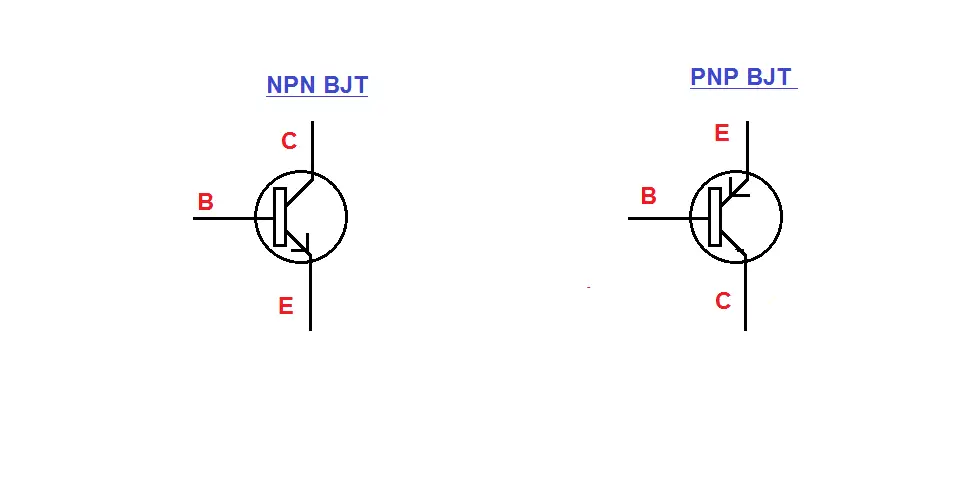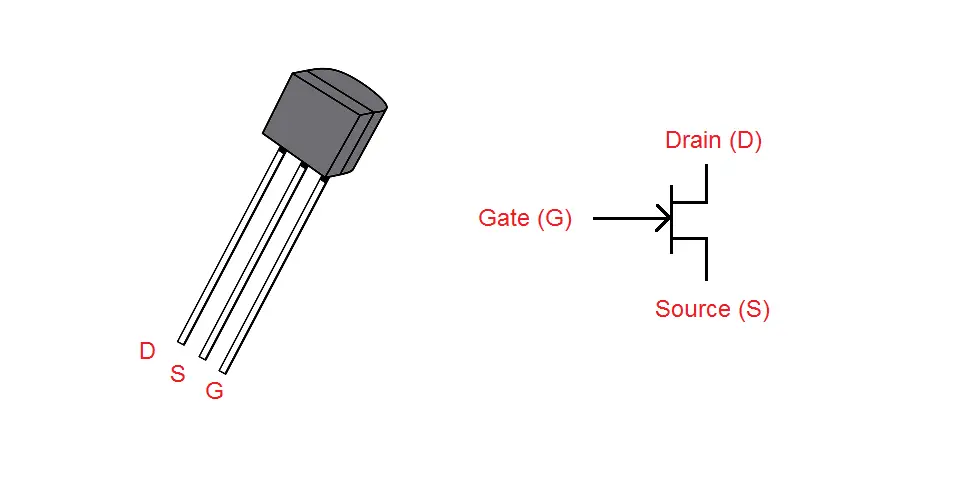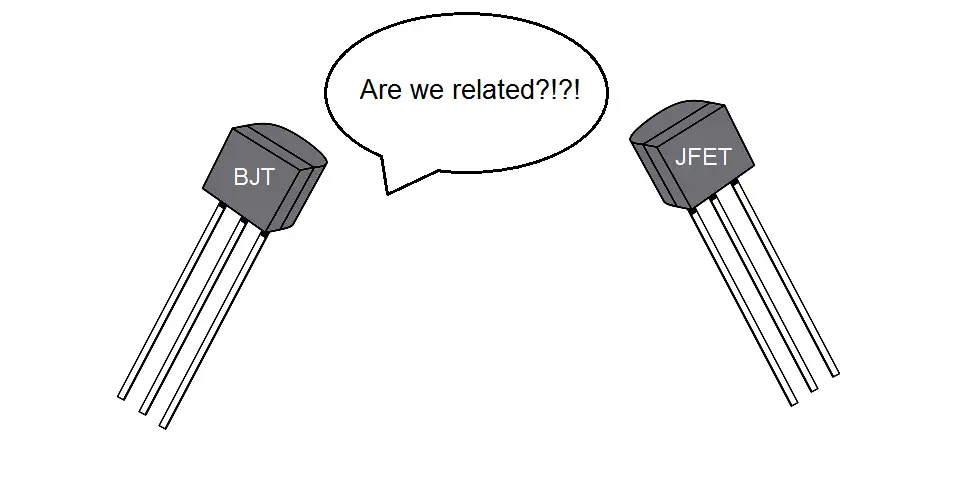Transistors are an integral part of many electrical and electronic circuits, with one of their most common applications being used as the foundation of Integrated Circuits (IC).
They are a semiconducting device used for either amplifying or switching electrical signals.
Transistors come in a variety of forms. While their end goal remains the same (switching of signals), the way they go about doing so may differ.
Materials used, as well as their construction are other factors that differ.
The two most common types of transistor used are the BJT and JFET.
So what is the difference between a BJT and JFET? The major difference between a BJT and JFET is that a BJT is a current controlled device, and a JFET is a voltage controlled device.
However, there are many other factors and differences between a BJT and JFET which this article shall take a closer look at.
A brief look at the transistor
As we just saw above, transistors are a type of semiconducting device, which in essence have the function of the humble switch.
They can be used to either conduct or insulate current or voltage. Another neat function of a transistor is the amplification of current or voltage.
Construction of a transistor commonly consists of placing an oppositely doped semiconductor between two similarly doped semiconductors.
Transistors are usually three terminal devices and have three regions of operation;
- Cut-Off
- Saturation
- Linear/Ohmic
Cut-off region
When the MOSFET is in the cut-off region the device is considered to be in its ‘OFF’ state. When it is OFF, no current flows through it.
Just like when a mechanical switch is open and stops the flow of current as well.
Saturation region
Saturation is when the current flow through the MOSFET is a constant value. In this region it behaves like a closed switch allowing current to flow freely.
Linear/Ohmic region
Last but not least is the Linear/Ohmic region.
In this region of operation, an increase of voltage across the drain and source sees an increase in current through the MOSFET as well.
A voltage or current is applied to one of the pins to activate (turn on) the transistor to allow current to flow.
Closer look at the BJT and JFET
Before we dive into the differences between these two transistors, it will help to first learn a little bit more about each of them individually.
So let’s take a look.
What is a BJT
Let’s start with the BJT.
A BJT, or Bipolar Junction Transistor is a bipolar device which has three terminals; Base (B), Emitter (E), and Collector (C).

A small current at the Base, turns it on allowing for a larger current to flow between the Collector and Emitter.
Construction and working principle of a BJT
A BJT can be further divided into two types; PNP and NPN.

PNP BJT
This type of BJT has an n-type material placed between two p-type materials. The flow of current is controlled by the device.
NPN BJT
This configuration of the BJT has p-type material in between two n-type materials. NPN transistors are commonly used to amplify weak signals.
What is a JFET
Now let’s take a look at the JFET which stands for Junction Field Effect Transistor.
The JFET is a type of FET (Field Effect Transistor) which is a three terminal unipolar device and also has three terminals; Gate (G), Source (S), and Drain (D).
A voltage at the gate turns ‘ON’ the JFET allowing for current to flow between the source and drain.

Construction and working principle of a JFET
In the JFET, there is no PN junction. It uses a narrow piece semiconducting material which has a high resistance.
This forms a ‘Channel’ which can either be N-type or P-type silicon.
The JFET can be split into two types; N-Channel and P-Channel.

N-Channel JFET
In this type of JFET, the channel is doped with donor impurities resulting in a negative flow of current. The conductivity in N-channel JFETs is higher due to a lower resistance.
P-Channel JFET
P-Channel JFETs have their channel doped with acceptor impurities resulting in a positive flow of current which is in the form of holes.
What is the difference between a BJT and a JFET?
Now that we have briefly covered both the BJT and JFET, let’s first take a look at the major differences between these two types of transistor.
Then later we shall look at other notable differences.
Difference #1 between a BJT and JFET: Current vs Voltage controlled
Earlier you would have seen that the BJT is a current controlled device, whereas the JFET is voltage controlled.
This is the first major difference between a BJT and JFET.
But what does it mean if a transistor is current or voltage controlled?
A transistor that is voltage controlled, has voltage as the controlling parameter. What this means is that the flow of current at the output terminals is controlled by a voltage at the input terminal.
The output current is a function of an input voltage.
On the other hand, a transistor that is current controlled, has current as the controlling parameter. This means that the flow of current at the output terminals is controlled by a current at the input terminal.
Output current is a function of an input current.
Difference #2 between a BJT and JFET: Unipolar vs Bipolar
Transistors that are bipolar use electrons, as well as holes as charge carriers. Whereas, transistors that are unipolar use only one kind of charge carrier; either electrons or holes.
The next difference is that a BJT is a bipolar device (hence the name Bipolar Junction Transistor), while a JFET is a Unipolar device.
A N-channel JFET has electrons as the major carrier, while a P-channel JFET has holes as the major carrier.
Difference #3 between a BJT and JFET: Input Impedance
Input impedance is an important characteristic of transistors which defines the ratio of input voltage to input current.
Input impedance helps determine the measure of the loading effect on the transistor.
A low impedance results in the transistor having a low-frequency response and a large input power requirement.
JFETs have high input impedances, while BJTs have low input impedances.
Difference #4 between a BJT and JFET: Noise level
Noise is an unwanted signal in electronic components, devices and circuits. It has a negative effect on the performance bringing down the overall efficiency.
In an ideal world there would be no noise, however, we do not live in an ideal world so noise will always be present.
When it comes to noise level for transistors, JFETs are less susceptible to noise compared to BJTs.
Difference #5 between a BJT and JFET: Voltage gain
The main function of a transistor is to act as a switch.
But, they have other functionalities as well. Transistors are often referred to as amplifying devices as a relatively small input can cause a large change in the output.
The voltage gain of a transistor is defined by the ratio of the output voltage to the input voltage.
A JFET has a higher voltage gain than a BJT.
Difference #6 between a BJT and JFET: Current gain
Current gain is similar to voltage gain with the only difference being that the ratio is now output current and input current.
The JFET again has a higher current gain than the BJT.
Difference #7 between a BJT and JFET: Switching times
If you were to close and open a mechanical switch, there is going to be a delay. You will not be able to switch between the two states instantaneously.
This is true for the switching of transistors electrically as well.
There is going to be a delay between current flow and when current or voltage is applied to the appropriate terminals of the transistors (Base for the BJT, and Gate for the JFET).
Also there will be a delay to when current stops flowing when voltage or current is removed from these terminals.
These delays between ‘ON’ and ‘OFF’ are known as the switching times.
JFETs have high switching times, while BJTs have medium switching times.
Summary of the differences between a BJT and JFET
The differences that we just covered of the JFET and BJT are the most notable ones. However, there are many other differences that need to be considered as well.
Below is a table that summarises other differences between a JFET and BJT.
| JFET | BJT | |
| Unipolar or Bipolar | Unipolar | Bipolar |
| Noise Level | Low noise level | High Noise level |
| Operation | Control of junction depletion under reverse bias | Injection of minority carrier across forward bias junction |
| Voltage or Current controlled | Voltage controlled | Current controlled |
| Damage to static | Very susceptible to static damage | Robust against static |
| Thermal stability | High thermal stability | Low thermal stability |
| Input Impedance | High | Low |
| Voltage gain | High | Low |
| Current gain | High | Low |
| Output impedance | High | Low |
| Switching times | High | Medium |
| Bias difficulty level | Difficult to bias | Easy to bias |
| Cost | Expensive | Cheap compared to JFET |
| Frequency response | High | Frequency variation affects performance |
| Gain bandwidth | Small | Large |
Which is better a BJT or JFET?
As you just saw, there are many characteristics that contribute to the overall workings of a transistor. And there are many differences between the BJT and JFET when you compare these characteristics.
So, which is better to use, a BJT or JFET?
Well there is no right answer to this question as one type of transistor has its own unique purpose and one might be better suited for an application compared to the other.
It really comes down to the needs of the application and which transistor can meet those needs.





